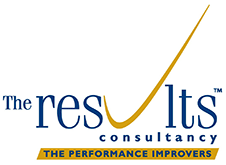 Naturally, all firms are keen to retain and develop their current client relationships. Retention makes sound commercial sense and can significantly reduce the cost of sale of new work streams.
Naturally, all firms are keen to retain and develop their current client relationships. Retention makes sound commercial sense and can significantly reduce the cost of sale of new work streams.
To retain their clients though, firms need to continually find ways to add value to them. This is largely dependent on how well the firm understands what their clients want and how client contacts feel about the experience the firm delivers. Those firms who aren’t seeking their clients’ views – and genuinely listening to them – are missing out on opportunities to build client loyalty and create a competitive edge.
In this article we explore 3 simple strategies to strengthen your own client listening approach.
Make more of post-assignment reviews
Many firms now have formal procedures in place to review what a client thought of a major piece of work. It’s worth emphasising though that the more astute professionals make a habit of asking appropriate ‘how are we doing?’ questions informally of their contacts as part of their on-going communication on both large and smaller assignment.
Not only does this demonstrate a real interest in delivering well for the client, it helps to resolve any concerns or misalignment early and ‘in the moment’. The best post-matter reviews are structured around a face-to-face or telephone discussion, not an impersonal feedback form. To encourage the client to give constructive and valuable feedback, you need to demonstrate your interest in what they have to say – and that requires your physical presence and dialogue.
As well as examining the quality of your technical output during the assignment, it’s vital to assess the often more sensitive area of the relationship management approach you wrapped around it – particularly if it was a challenging assignment for both you and the client. In our experience, client concerns often stem from this area, so it’s important to gain their views on aspects such as the appropriateness of your communication, the accessibility of team members and their responsiveness, the dynamics and the perceived added value the client feels they’ve gained from the work.
For a more proactive approach, check how this project is fitting into longer terms plans and ask about any related issues that are commanding your client contact’s attention both now and in the future… can you help in some way?
Finally, agree with the client to diarise time to communicate how you are responding to their feedback. This will reassure them that their time has been well spent and they will be more likely to commit to giving such feedback next time – a virtuous circle.
2. Initiate an annual or bi-annual client relationship review
At a higher level than post-assignment reviews are feedback-gathering sessions that help you to examine the client’s broader relationship needs and how you can best serve them.
Conducted typically once or twice a year, the client relationship review can be a chance to assess how the relationship ‘feels’ to the client and identify how best to support them in the coming year. It gives the firm’s client team and their client contacts a chance to step back and think strategically about the client organisation’s goals, opportunities and challenges.
Far-sighted firms have been known to make this Review a big thing – they differentiate themselves and are valued for it by clients. One approach is to bring together both the client’s team and their own for a forward-thinking strategy session – sometimes at an appealing off-site venue, which adds to the overall experience for the client’s team. This review helps them to:
- Expand their knowledge of the client’s short, medium and long-term goals
- Get the client contact’s view on their organisation’s recent developments and latest news
- Forge relationships with different people in the client team (particularly if there have been changes in personnel)
- Fine-tune their team’s dynamics and approach to align with the client’s plans and working preferences
- Present more commercially-appropriate solutions in the coming months
For the client to want to invest their time here on an annual basis, you need to ensure they gain distinct advantages from the session. As well as using the review to identify ways to improve your firm’s effectiveness in managing the relationship, help the client to come away with a gain of some kind – be it…
- new insight for a key goal/objective,
- help in reducing the hassle of a current challenge
- gaining an objective and experienced sounding board
- having the chance to think about their own plans and draw on different expertise and knowledge within the firm
…or some other way that helps them to achieve results important to them.
3. Don’t underestimate the value of secondee feedback
Professional firms regularly provide clients with secondees as an added value service and a means to further cement the relationship. The experience benefits both organisations – enabling them to share practical help, support and knowledge.
During their time in the client’s organisation the secondee will be party to valuable insight about the client’s systems, people, working practices, plans, challenges and opportunities. Sometimes, due to time pressures on both sides, the firm waits until the end of the secondment to gain this knowledge.
It makes commercial sense to have more regular contact points (eg monthly or quarterly) with the secondee. This faster knowledge exchange can help the firm present the client with prompt improvements in the way they manage the relationship or proactively offer support for an issue that has just arisen.
At these regular review points, follow a short, structured agenda to find out how things are going. Guide the secondee as to the insight it would be valuable to gain from their time at the client’s organisation, without breaking client confidentiality guidelines, of course. The more knowledge gaps they’re aware of, the more they can do to help fill them.
Summary
Whilst we’re not advocating that you unnecessarily hound clients for feedback, there are times during a relationship when informal and formal client views can really help. In the main it can help you to assess if your approach is actually building client loyalty and identify ways to further develop your work for them.
Of course, each client will be different, and some may be more comfortable than others in relaying their views. The key is to reassure clients that the time invested in giving feedback is worthwhile. At a basic level you need to demonstrate you’ve listened, and are acting on any comments they give. Find subtle ways in the coming weeks and months to demonstrate the steps you’re taking and the fact that you have listened.
For further advice about client relationship management training and resources, please contact us on tel 44 (0) 20 7488 4419


